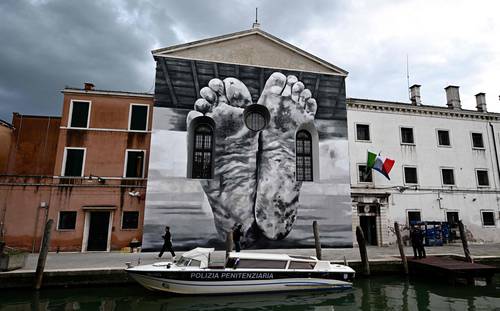The Venice Biennale opens to narratives of inclusion with what foreign
as axis
The Venice Biennale, the best known in the world, immerses itself in its 60th edition in the problems surrounding the concept foreign
, by addressing both racist and homophobic connotations, as well as the feeling of alienation experienced by marginalized people and migrants. It is curated by Brazilian Adriano Pedrosa, who not only becomes the first Latin American to direct the exhibition, but also the first to do so openly as part of the LGBT+ community.
In times of growing nationalism, Pedrosa challenges one of the most significant fears and targets of attack: diversity. With the participation of 330 artists, Pedrosa has prioritized the inclusion of historically underrepresented categories in art, such as indigenous and queer.
This innovative approach finds its roots in the progressive changes observed in this biennial in the past decade, where categories such as non-professional artists, African art and works by women artists have been integrated. Pedrosa, with a solid track record as an international curator, has demonstrated his commitment to diversity and inclusion in previous projects, such as his work at the Sao Paulo Assis Chateaubriand Art Museum since 2014.
However, despite this openness to new narratives and perspectives, the current exhibition appears to depart from the standards of the past by almost completely excluding European artists, except for those who share the experience of migration or marginalization. This decision has generated some controversy among critics such as Luca Beatrice, who regretted the Italian absence in the biennial, and interpreted it as an act of disdain.
The initial concerns expressed by the new president, Pietrangelo Buttafoco, backed by the ultranationalist government of Giorgia Meloni, appear to have dissipated. The Venice Biennale, a cultural treasure for the ever-expanding city, has become vital to its economy. As Buttafoco pointed out in a press conference, the biennial represents an instrument of peace that seeks to bring people together through art and dialogue.
Venice, a global island where the local population is in decline, with less than 50 thousand inhabitants, has experienced exponential growth thanks to the success of the biennale. However, this cultural boom has also led to a significant increase in real estate speculation in the city. As satellite exhibitions continue to proliferate and any available building becomes an exhibition space, the monthly rental cost can range between 10,000 and 50,000 euros, depending on the type of property. On the other hand, the assembly of a pavilion can cost between 100 thousand and 700 thousand euros, according to Paolo de Grandis, an expert in the sector.
Economic attractiveness and urban deterioration
Concern about the possible commercialization of the biennial is shared by prominent figures in the art world, such as Maria Balshaw, director of the Tate in London, who urges preserving the quality and originality of the meeting. The growing role of gallery owners and collectors with lucrative interests is also noted, as exemplified by Burberry’s sponsorship of the British pavilion for the second consecutive time this year.
Despite the economic appeal of the biennale, concerns are being raised about Venice’s fragility. Experts such as Mario Piana warn about the deterioration of the characteristic walls of Venetian buildings due to the oxidation of their rods, a problem exacerbated by heating and climate change.
The geopolitical context is also present in the biennial pavilions. The absence of Russia for the second consecutive year and the taking of its place by Bolivia, as well as the closure of the Israeli pavilion due to political conflicts, are direct reflections of international tensions. Protests, such as those held in front of the Israel pavilion by pro-Palestine protesters, demonstrate that art is a space for political and social expression.
In summary, this edition of the biennial is much more than a cultural event; It is a microcosm where not only diverse artistic expressions converge, but also the complexities and tensions of the contemporary world.
In this scenario, the city of Venice finds itself at a crossroads, facing both economic and structural challenges, while trying to maintain its unique identity in an increasingly globalized environment.
